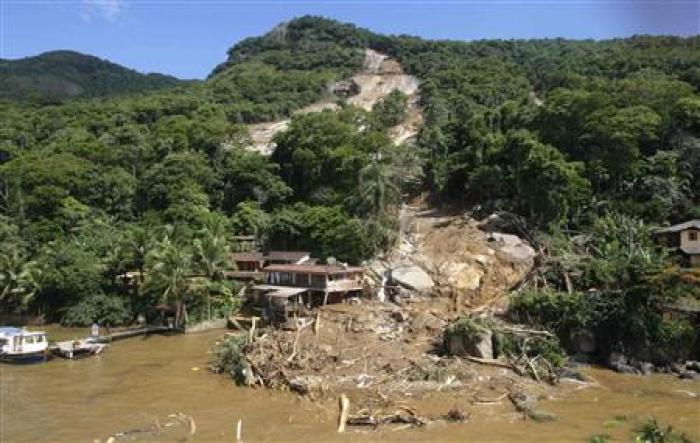
© Bruno Domingos/ReutersAn aerial view of Pousada Sankay hotel buried by a mudslide in Angra dos Reis, Rio de Janeiro state January 1, 2010.
Mudslides and flooding killed at least 44 people in Brazil's Rio de Janeiro state and authorities said on Friday that the death toll could climb with more heavy rains in the forecast.
Twenty-two people were found dead on Friday after a small hotel and surrounding homes collapsed in the beach resort of Angra dos Reis, one of Brazil's most exclusive tourism destinations, the Rio de Janeiro state's civil defense said.
Television footage showed the Sankay hotel and a number of homes in Angra buried under a mountain of mud. Rescue teams, aided by helicopters and navy boats, were struggling to reach the area where the hotel collapsed, Pedro Machado, head of the firefighters' corps, told GloboNews television.
Civil defense authorities said about 40 people were registered at the hotel. They told Reuters heavy rains forecast for the coming days could make rescue work harder and trigger more mudslides.


Comment: Who is Kent Clizbe? CIA counter-terrorism 'expert':